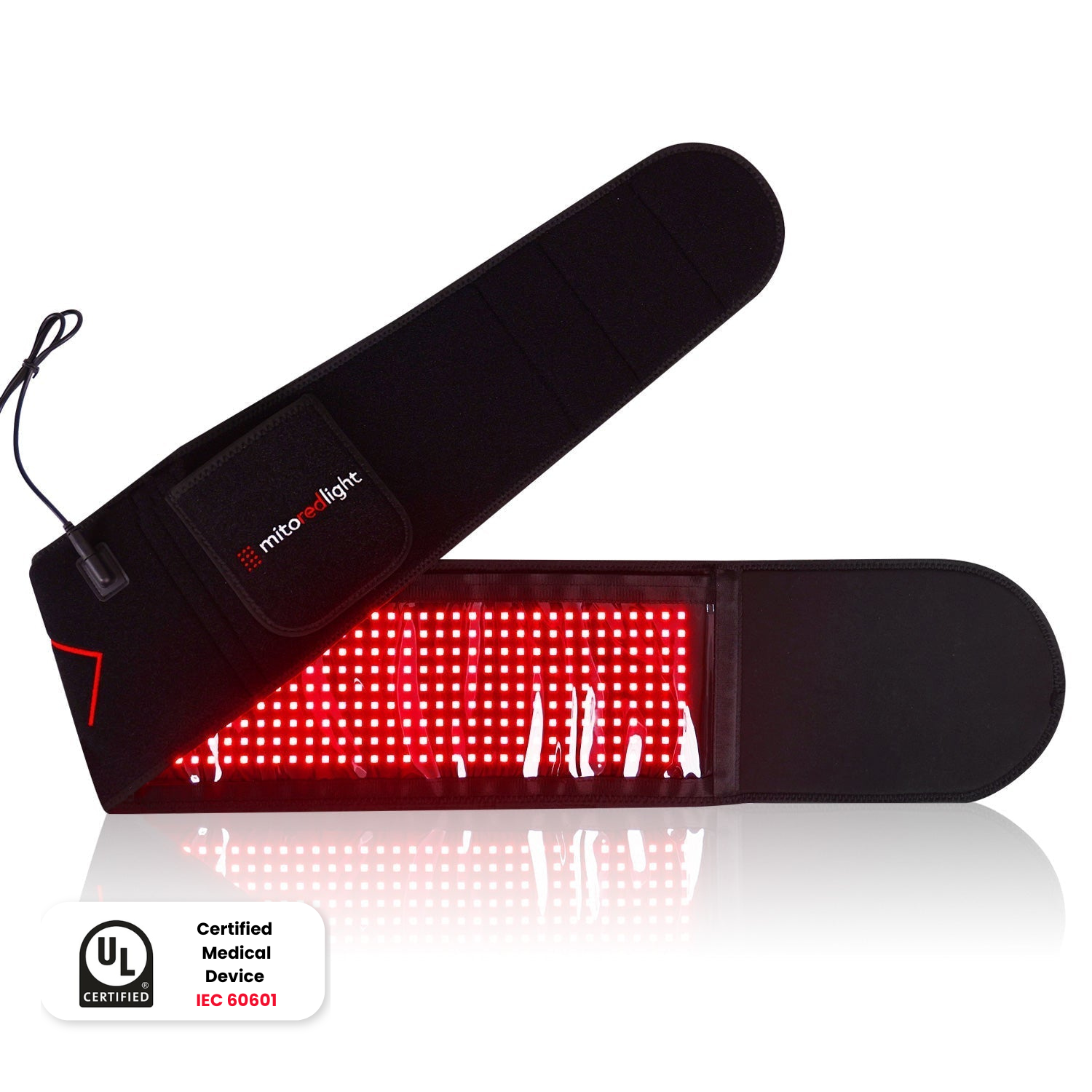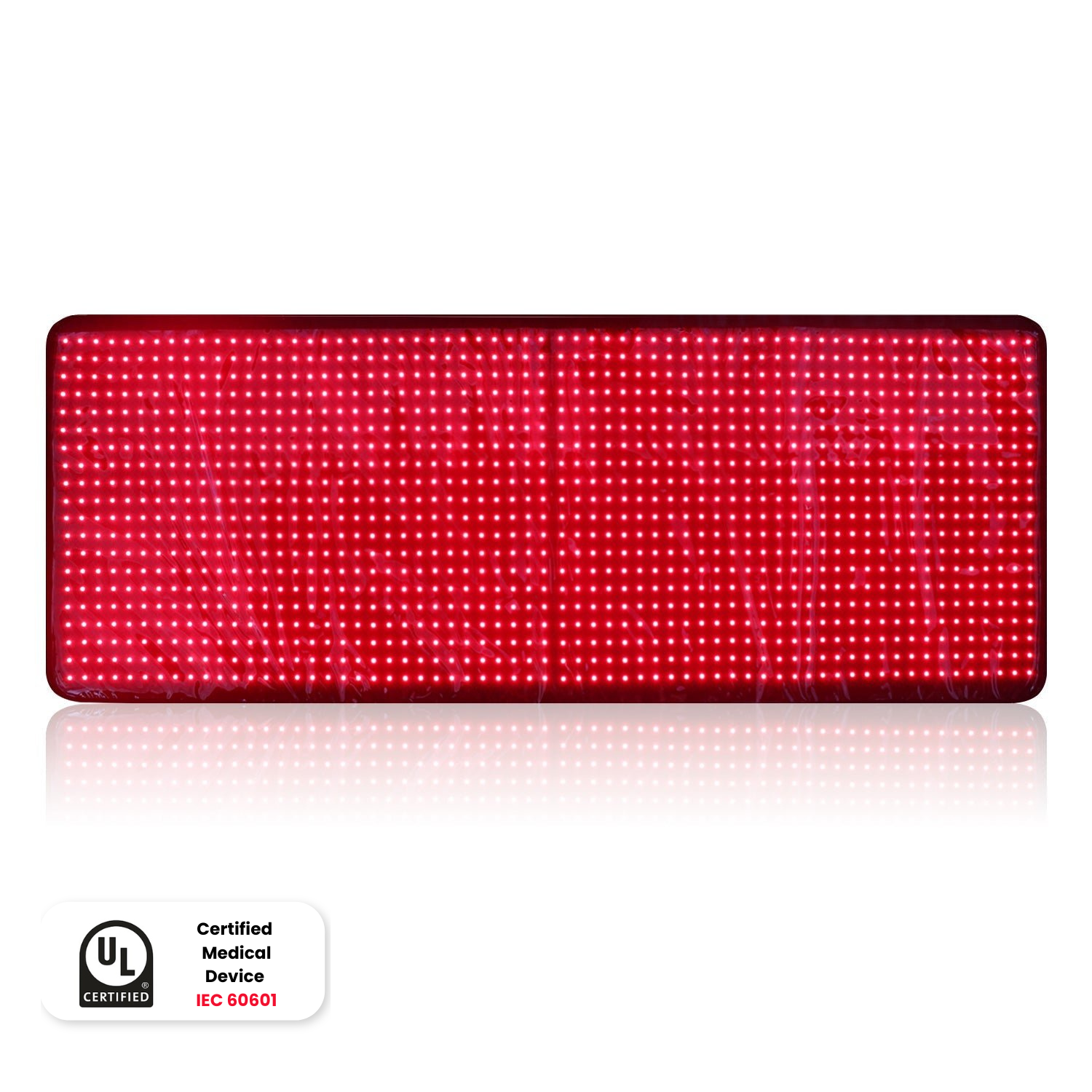DISCLAIMER: Mito Red Light devices are Class II wellness devices aimed at affecting the body through topical heating and supporting cellular function. The information provided in this article and on this site is for educational purposes only and is not intended to imply effectiveness of Mito Red Light devices for any specific application. The information provided in this article and on this site is not intended to diagnose, treat, cure, or prevent any disease, is not a substitute for consultation with a licensed medical provider and should not be construed as medical advice. Click here to read our article on potential contraindications of red light therapy..
Medically Reviewed by | Heidi Wright, BSN, RN, PCCN
At Mito Red Light, we're working to help flip the script on unexpected health curveballs. Lymphedema doesn’t have to be a game-ender — this condition, often shrouded in misunderstanding, can lead to swelling that throws a wrench in your daily groove. If you’re working to manage lymphedema, red light therapy might be able to help your body fight back and stay on track.
Read on to discover all you need to know about red light therapy and its potential to transform your encounter with lymphedema.
What Is Lymphedema?
Picture this: your body's lymphatic system, a silent and usually invisible network, working tirelessly to keep your fluids balanced and your immune defense strong. Now, imagine a kink in this system, like a garden hose with a blockage, preventing water from flowing freely.
That's lymphedema in a nutshell — a buildup of lymph fluid in your tissues causing swelling because the lymphatic system is either damaged or blocked.
When this happens, a number of symptoms can manifest, such as:
- Swelling that could be subtle or dramatic, affecting your arm, leg, or even your face, neck, and abdomen in more advanced cases.
- A feeling of heaviness or tightness in the affected area.
- Restricted range of motion.
- Recurring infections in the affected limb.
- Skin changes, such as hardening or thickening.
If you're nodding along, recognizing these signs in yourself or a loved one, you're already taking the first step toward managing lymphedema. After all, knowledge is the first slice of the solution pie.
What Causes Lymphedema?
Lymphedema doesn't just appear out of nowhere; it's often the result of specific conditions or events that disrupt the normal function of the lymphatic system. This system plays an important role in our body's ability to drain lymph, a fluid that contains white blood cells, back into the bloodstream. When this system faces a hiccup, lymphedema steps into the limelight.
There are two main acts in the lymphedema drama:
Primary Lymphedema: Born-With-It
Primary lymphedema is akin to a rare, unique condition — it's less common and is often tied to genetics. Individuals with this type are born with a lymphatic system that's not quite up to par due to lymph vessels being too few, too large, or just not as efficient at moving lymph. This version can be present from birth, though it sometimes makes a delayed entrance during adolescence or even into adulthood.
Secondary Lymphedema: Acquired
Secondary lymphedema is the more prevalent type, emerging after an event that compromises the lymphatic system's functionality. It's the body's response to external stresses like:
- Surgery, especially cancer treatments where lymph nodes might be removed.
- Radiation therapy, which can harm the lymph vessels.
- Cancer, with tumors that may grow large enough to obstruct the flow of lymph.
- Infection, particularly severe infections that can damage the lymphatic system.
In both scenarios, the underlying issue is an obstruction or impairment in the body's fluid drainage system, leading to the accumulation of lymph and subsequent swelling.
Identifying the cause of lymphedema is a critical step in managing and treating the condition, paving the way for targeted approaches like red light therapy to potentially help alleviate symptoms and enhance your overall well-being.
What Is Red Light Therapy?
Red light therapy is a powerhouse of healing potential. Red light therapy involves exposing the body to low levels of red and near-infrared light.
So, how does red light therapy work in the body? The magic happens when the mitochondria, the powerhouse of your cells, soak up this light, potentially supporting enhanced cell performance and repair.
What Are the Benefits of Red Light Therapy?
Red light therapy has the potential to help support your health in various ways and address a range of concerns:
Skin Health and Wound Healing
Red light therapy shines in the skincare arena, working to potentially help support healthy wound healing and collagen production. Red light has the potential to help minimize the look of signs of aging and leave you with that coveted glow.
Pain Reduction
For those battling chronic pain, this therapy can be a beacon of relief. It's known for easing discomfort and reducing inflammation, allowing your body to move more freely and comfortably.
Improved Circulation
Imagine your blood vessels getting a gentle nudge to work more efficiently, delivering oxygen and nutrients where they're needed most. That's red light therapy working to help support your circulation and overall vitality.
Enhanced Muscle Recovery
Athletes, take note — red light therapy just might be your new best friend. It might be able to help muscles bounce back faster after intense workouts, reducing soreness and improving performance.
Overall Wellness
In a more general sense, red light therapy is celebrated for potentially working to support your overall mood and energy levels, helping you feel generally rejuvenated and ready to tackle the day.
Can Red Light Therapy Help With Lymphedema?
Lymphedema often leads to a challenging journey filled with conventional treatments that may not always hit the mark. This is where red light therapy steps in.
The Connection
The science behind red light therapy’s effectiveness lies in its potential ability to stimulate the lymphatic system, encouraging the natural drainage of lymph fluid that accumulates in affected areas.
Moreover, by supporting mitochondrial function in cells, red light therapy may help enhance tissue repair and ease inflammation. This support to the body’s tissue repair cells makes it a compelling option for those looking for additional ways to manage lymphedema symptoms.
Clinical Insights
Emerging studies and clinical trials are beginning to shine a spotlight on red light therapy’s potential benefits for lymphedema patients. Early research suggests that regular treatment sessions might lead to noticeable reductions in limb volume and improvements in skin condition and quality of life for those affected.
While the body of evidence continues to grow, these initial findings offer a ray of hope and a new avenue for exploration in lymphedema care plans.
“Beyond its potential role in supporting the body's natural healing processes and improving quality of life, red light therapy offers additional potential benefits for those living with lymphedema,” notes Heidi Wright, Registered Nurse.
- Reduced Inflammation: RLT has the potential to reduce inflammation, a common symptom of lymphedema that can contribute to discomfort and swelling. By reducing inflammation, RLT may help alleviate some of the pain associated with lymphedema.
- Support for Pain Management: Studies suggest that RLT may offer pain-relieving properties. This can be particularly welcome for those regularly experiencing pain.
In essence, red light therapy holds promise as a potentially valuable tool in the lymphedema management toolkit, offering a gentle, non-invasive means to address inflammation, reduce pain, support the body's natural healing processes, and improve the quality of life.
A Complementary Approach
It’s important to view red light therapy as a complement to, not a replacement for, existing lymphedema treatments and professional, personalized advice from your doctor. Integrating red light therapy into a comprehensive care plan, which may also include manual lymphatic drainage, compression garments, and exercise, can have a synergistic effect, enhancing the overall management of the condition.
In essence, red light therapy holds promise as a potentially valuable tool in the lymphedema management toolkit, offering a gentle, non-invasive means to support the body’s natural healing processes, reduce symptoms, and improve the quality of life.
How To Use Red Light Therapy for Lymphedema
Are you kicking off your red light therapy journey? Here’s what to know about incorporating red light therapy into your daily routine.
First Things First, Talk to Your Doc
Before you start, it's always best to have a word with your healthcare provider. They can give you the green light on integrating red light therapy into your existing lymphedema management plan.
Pick the Right Gear
In the world of red light devices, our MitoPRO Series stands out. It's engineered with wavelengths that aim straight for the deep tissue, helping ease the swelling and encouraging healing where it counts.
Ease Into It
Begin with bite-sized sessions. You might want to start with 5-10 minutes targeting the area of concern and see how things go from there. Generally, it’s best to use red light therapy for up to 20 minutes a day, and you should always use your red light therapy device as instructed.
Consistency Is Your Friend
Aim to incorporate red light therapy into your daily routine for best results, and be consistent with your sessions.
The Final Word
At Mito Red Light, we're not just about illuminating spaces; we're here to light up lives, especially for those navigating the complex journey of lymphedema. With red light therapy, we're providing a tool that may be able to help make a difference in your overall wellness.
Whether it’s easing the swelling, improving circulation, or simply enhancing your overall sense of well-being, we’re here to support you every step of the way. Consider red light therapy as a part of your holistic approach to lymphedema management, and let's bring some light to your wellness journey.
Sources:
Lymphatic System: Function, Conditions & Disorders | Cleveland Clinic
Lymphedema - Symptoms and causes | Mayo Clinic
Lymphedema: Symptoms, Causes & Treatment | Cleveland Clinic
Diagnosis and Staging of Lymphedema | PMC
Red Light Therapy: Benefits, Side Effects & Uses | Cleveland Clinic































